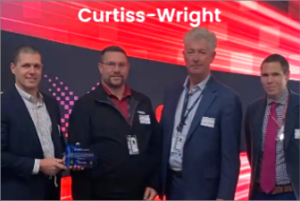
Curtiss-Wright announced as a winner of US Army xTechPlugfest Position, Navigation & Timing CMOSS Plugfest Competition


ABB has released the findings of a new global study of international business and technology leaders on industrial transformation, looking at the intersection of digitalisation and sustainability. The study, “Billions of better decisions: industrial transformation’s new imperative,” examines the current take-up of the Industrial Internet of Things (IoT) and its potential for improving energy efficiency, lowering greenhouse gas emissions and driving change. The goal of the new ABB research is to spur discussion within industry regarding opportunities to leverage the Industrial IoT and empower companies and workers to make better decisions that can benefit both sustainability and the bottom line.
“Sustainability goals more and more are a crucial driver of business value and company reputation, and Industrial IoT solutions are playing an increasingly important role in helping enterprises achieve safe, smart and sustainable operations,” said Peter Terwiesch, President of ABB’s Process Automation business area. “Unlocking insights hidden in operational data holds the key to enabling literally billions of better decisions throughout industry and acting upon them, with significant gains in productivity, reduced energy consumption and lower environmental impact.”
The study, commissioned by ABB, found that an organisation’s “future competitiveness” is the single greatest factor – cited by 46 percent of respondents – in industrial companies’ increased focus on sustainability. Yet while 96 percent of global decision-makers view digitalisation as “essential to sustainability,” only 35 percent of surveyed firms have implemented Industrial IoT solutions at scale. This gap shows that while many of today’s industrial leaders recognise the important relationship between digitalisation and sustainability, the adoption of relevant digital solutions to enable better decisions and achieve sustainability goals needs to accelerate in sectors like manufacturing, energy, buildings and transport.
Further key learnings from the study
Win-win scenarios with the Industrial IoT
With 63 percent of executives surveyed strongly agreeing that sustainability is good for their company’s bottom line, and 58 percent also strongly agreeing it delivers immediate business value, it’s clear that sustainability and traditional priorities of Industry 4.0 efforts – speed, innovation, productivity, efficiency, customer-centricity – are increasingly intertwined, opening up win-win scenarios for companies looking to drive efficiency and productivity while making strides on climate change.
“The International Energy Agency estimates that industry accounts for more than 40 percent of global greenhouse gas emissions today,” said Terwiesch. “If we are to reach climate objectives such as the UN’s Sustainable Development Goals and the Paris Agreement, industrial organisations need to implement digital solutions as part of their sustainability strategies. Embracing these technologies at all levels – from the boardroom to the facility floor – is key, as every member of the industrial workforce can become a better decision-maker when it comes to sustainability.”
ABB innovations for sustainability
ABB is committed to leading with technology to enable a low-carbon society and a more sustainable world. Over the past two years, ABB has reduced greenhouse gas emissions from its own operations by more than 25 percent. As part of its Sustainability strategy 2030, ABB expects to be fully carbon neutral by decade’s end and to support its global customers in reducing their annual CO2 emissions by at least 100 megatons by 2030, the equivalent of removing 30 million combustion cars from the roads each year.
ABB’s investments in digital capabilities are core to this commitment. With more than 70 percent of ABB’s R&D resources dedicated to digital and software innovations, and a robust ecosystem of digital partners, including Microsoft, IBM and Ericsson, the company has established a leading presence in Industrial IoT.
The ABB Ability portfolio of digital solutions enables a host of industrial use cases to power improvements in energy efficiency, resource conservation and circularity, including condition monitoring, asset health and management, predictive maintenance, energy management, simulation and virtual commissioning, remote support and collaborative operations. Examples of ABB’s more than 170 Industrial IoT solutions include ABB Ability Genix industrial analytics and AI suite; ABB Ability Energy and Asset Manager; ABB Ability Condition Monitoring for Powertrains; and ABB Ability Connected Services for industrial robots. To learn more about ABB Ability, visit: https://global.abb/topic/ability/en
To continue the conversation on this important topic, ABB will host an industry webinar on Wednesday, March 2, focused on the convergence of digitalisation and sustainability, and how the Industrial IoT and related technologies can help save energy, conserve resources, and improve safety for personnel and communities. Leading technology journalist and climate investor Molly Wood will moderate this virtual panel discussion featuring senior executives, best-selling authors and other thought leaders to explore this convergence and how industrial organisations can empower better, more sustainable decision-making throughout the enterprise.
Alphasense have successfully marketed and distributed ION Science’s MiniPID Sensors during a long partnership. ION Science would like to thank them for their support over the years and wish them well for their future with AMETEK.
Customers who were purchasing MiniPID (PID-A range) through Alphasense are now encouraged to source the world’s best PID sensor directly from global ION Science offices. ION Science has worked hard with committed suppliers to offer the best PID sensor lead times on the market. Coupled with an experienced and dedicated support team, ION Science will make sure customers’ continued supply of MiniPID is seamless.
The types of instruments that ION Science sensors are used in should never be subject to compromise. Many can contribute to saving lives, preventing serious health effects, and protecting the environment. Equipping the right kind of sensor is essential to ensure your business remains compliant, safe, and certified.
MiniPID benefits include: patented fence electrode technology, market leading humidity resistance, and anti-contamination design for accurate detection in the harshest of conditions. Staying with MiniPID ensures there is no compromise on an instruments’ performance.
The MiniPID range of sensors goes beyond just one single base model. ION Science’s dedicated research and development team has engineered a suite of sensors based on market feedback to ensure that whatever a customer requires, there is a sensor fit for purpose. The product line includes:
ION Science is available to support customers who have any questions about the transition away from Alphasense supply, and they can be assured there is no change in product quality, choice, or availability. The technology that sets the ION Science MiniPID sensors apart remains the same excellent product as always.
Electrocomponents has announced the appointment of Doug Moody as the Group’s Chief Services Officer, reporting to CEO Lindsley Ruth. In this new role, Doug will accelerate the development and execution of a value-added services strategy to better serve customer needs and drive business growth. 
Doug’s experience includes large P&L leadership across multiple industries and diverse markets worldwide. His expertise at bringing together businesses and harmoniously leveraging their product and service offerings has delivered exceptional customer success and business performance in his former roles.
Prior to Electrocomponents, Doug was COO of the Asia Pacific region of Johnson Controls, based in Singapore. Previously, he was President, Asia Pacific at Tyco before the merger with Johnson Controls. Before joining Tyco, Doug led FMC Technologies’ business in key global and regional executive leadership roles based in Asia Pacific and the Americas.
“Electrocomponents is a hugely ambitious organisation, and I am really excited to be joining at such a pivotal stage in the company’s transformational journey. With its proposition and reach to over 1.2 million customers worldwide, the Group has an enormous opportunity to strengthen its partnerships with them and ease their procurement requirements.” said Doug Moody.
Lindsley Ruth commented: “We are making good progress moving from a product company to a global, omni-channel product and service solutions business. Doug will play a key role in unlocking the growth potential of our product and service solutions globally; this is a strategic priority for us. We aim to provide our customers with a more consistent global value proposition offering an extensive range of product and service solutions that are tailored and delivered locally.”
Independent research commissioned by RS Components (RS) has shown that, by building resilience among their staff, senior engineers can often make fast and cost-effective improvements to their business’ overall resilience.
The third report in the Resilience Index series – The Resilience Index: People -How a focus on people can strengthen resilience quickly and cost-effectively – identified five key practical actions that senior engineers should consider taking to build resilience across their team and drive forward the overall resilience of their business.
The actions identified will help companies not only to recruit and train the right people to support their aims but will also help to underpin a company’s behavioural resilience by prioritising safety, skills, and capabilities.
The five actions are:
Peter Malpas, President EMEA at RS Components, comments: “It is estimated that transforming manufacturing resilience in the UK could add £26bn of productivity value to the economy. It’s clear that company workforces have a vital role to play in achieving this.
“The findings of the third report show that strengthening resilience across your team can be one of the fastest and most cost-effective ways to build resilience across your business.
“As a strategic partner in supply chains, RS Components offers bespoke services and solutions to help senior engineers unlock the opportunities offered by building people resilience. From personalised PPE to keeping the workforce safe, through to services such as inventory solutions which mean elements of operations can be outsourced and valuable time freed up to drive improvements on site.”
For a copy of The Resilience Index: People – How a focus on people can strengthen resilience quickly and cost-effectively, visit: https://www.rs-connectedthinking.com/en/operational-efficiency/insight/the-resilience-index-people
Amid the challenges faced by businesses around the world in 2021, TE Connectivity, a world leader in connectivity and sensors, maintained its positive reputation among the global business community, earning for the fifth year in a row a place among FORTUNE magazine’s World’s Most Admired Companies.
The annual survey, conducted by FORTUNE and Korn Ferry, is given to top executives, directors and financial analysts to identify the companies that enjoy the strongest reputations among their peers and across industries. TE was ranked sixth in the electronics industry.
“I am pleased that our peers continue to see in TE what I see—a team of employees around the world who continue to innovate, strengthen customer relationships and fulfill our purpose to create a safer, sustainable, productive and connected future, even when conditions are tough,” said CEO Terrence Curtin.
The World’s Most Admired Companies list is the definitive report card on corporate reputation. To compile the rankings, corporate reputation and performance are measured against nine key attributes, including investment value, quality of management and products, social responsibility and ability to attract talent.
A pioneering degree apprenticeship programme from Siemens Digital Industries has supercharged the careers of 60 engineers from companies across the UK.
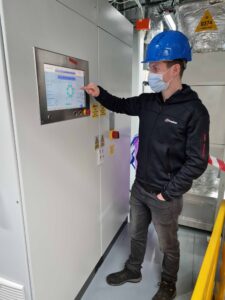
Among the companies who have signed up to the four-year programme since it launched in 2017 are AstraZeneca, Saint-Gobain Formula and Zeeco Europe.
Co-delivered with Tameside College and the University of Salford it uses a block delivery model combining academic modules in automation, robotics, and embedded systems, Siemens S7 Certified PLC programmer training and accreditation, and a workplace project to solve a real-world problem.
The outcome is a degree-qualified engineer with a range of practical skills and technical understanding needed to capitalise on the opportunities of Industry 4.0.
Seven apprentices have so far graduated with a BEng Hons (Bachelor of Engineering) in Control and Automation, and a further 53 are on target to achieve their qualification and accelerate up the career ladder.
Rob Rowson started his engineering degree apprenticeship with AstraZeneca in 2020.
The 20-year-old mountain biking enthusiast from Macclesfield was inspired to pursue electrical engineering, following in the footsteps of his dad’s career as an electrician.
“I’ve always kept my options open when it came to vital decisions like choosing GCSEs and A-levels and made sure I had a good mix of STEM and humanities subjects,” Rob explained. “I took the same approach when I considered the next step but decided that after years of study I wanted to get some real-world experience under my belt. A degree apprenticeship offers the best of both worlds – paid-work and study! For me it was a no-brainer.”
After a full academic year at Tameside College, Rob is now working on-site at AstraZeneca’s facility in Macclesfield and studying in block release for his HNC in Electrical/Electronic Engineering and on target to graduate with a degree in 2024.
“From the first moment I stepped into AstraZeneca I knew my chosen path was the right one,” Rob added. “All the study in the world doesn’t prepare you for the thrill of working on-site in such a high tech and fast-moving operation at the cutting-edge of medical innovation.
“It’s a great feeling when the penny drops and something you’ve studied appears as a real-life problem in front of you. Every day is different and there is a great team around me to help me find my way.”
Emma Worthington, Vocational Skills Consultant, and David Stirk, Engineering Apprentice Coach, from Siemens Digital Industries, have worked closely with partners to develop the degree programme.
“We started this journey four years ago in a new landscape of apprenticeship standards for which no training provider knew what a successful programme would look like,” Emma said. “Our partnership with AstraZeneca, Saint-Gobain Formula and Zeeco Europe has developed a level six industry-relevant qualification.
“Working closely with managers and automation engineers from all the companies who have committed their apprentices to the programme has been fundamental to its success. Together we are creating generations of highly qualified engineers ready for the challenges that lie ahead.
Kim Hardman, UK Apprenticeship Lead at AstraZeneca, said: “Our Engineering Apprenticeship Programme is developing the technicians and engineers of the future. Engineering apprentices are hugely important, maintaining complex equipment and upholding our high standards for safety, manufacturing quality and documentation, and helping us solve the challenges that can arise with some of the most advanced medical equipment in the world.
“But as well as key technical skills required now and in the future, the degree apprenticeship programme grows their abilities in crucial complimentary areas like organisation, prioritisation, problem solving techniques, teamwork, communication, and presentation skills.”

Brian Holliday, Managing Director, Siemens Digital Industries, said: “National Apprenticeship Week is the perfect opportunity to celebrate the success of our degree apprenticeship programme and illustrate what can be achieved by collaboration between industry and academia.
“Our programme has helped us reach out to a myriad of manufacturers including pharmaceutical, OEM, chemicals, food and drink and even global supply chain leaders, who strive to close in on the skills gap and bring its work force up to speed to use new innovation technologies and automation in their factories.
“My own career started with an apprenticeship, so I fully endorse them as a fantastic alternative to young people, and those looking to upskill, wishing to explore a different path to university and achieve a degree.”
A manufacturer of water heaters trusts Contrinex to quickly and reliably test stainless-steel-braided hydraulic hoses at the final stage of manufacture. Before the over-pressure test is applied, a system that uses several Contrinex inductive sensors checks each hose assembly to ensure that the correct mechanical parts have been fitted. Applying high pressure to an incomplete assembly could result in catastrophic failure, damaging test equipment and risk of operator injury.
Customer application
A manufacturer of stainless-steel-braided high-pressure hoses for water heaters carries out mandatory over-pressure testing on every hose assembly. If either of the mechanical unions fitted to the ends of each hose is incorrectly assembled, it will leak under pressure.
Occasionally, a component is omitted entirely, making a hose liable to fail catastrophically. To avoid damaging test equipment and endangering personnel, a sensor system is needed to confirm the presence of three critical parts on each union before testing commences.
Each extra test extends the process cycle time. The customer requires a single test fixture capable of carrying out three presence checks concurrently, minimising the additional cost.
The three critical parts, made from stainless steel, carbon steel and brass, respectively, are positioned nearby when assembled. Access is limited and therefore the three sensors must be small, yet able to sense these materials reliably at distances up to 6mm.
Customer solution
By mounting three separate M8- and C5-sized Contrinex inductive sensors, available from PLUS Automation, in a single fixture, all the demands of this application can be met in full. Each sensor is chosen for its combination of size, sensing distance and reliable detection of one of the three different materials
To detect the brass union nut, an M8-diameter sensor from the Basic range (Extra Distance family) with a 4mm sensing distance is selected. Fully embeddable with chrome-plated nickel-silver bodies and PBTP sensing faces, this sensor has a correction factor of 1.0 for brass, outperforming competitors.
For detecting the steel spring, a 5mm-square-section sensor from the Miniature range is an ideal option. Embedding the sensor makes optimal use of its 1.5mm sensing distance, and its chrome-plated brass body is well-suited to the environment.
Finally, to ensure reliable detection of the stainless-steel collar, an M8-diameter sensor from the EXTREME 700 Series, was chosen. Its one-piece AISI 303 (V2A) stainless-steel construction is combined with an extended operating distance of 6mm.
Each sensor is configured with an industry-standard PNP normally-open interface and features a hermetically sealed cable entry. All three are connected to the customer’s control equipment via PUR-sheathed cables. Delivering the required detection capabilities and sensing distances in small-bodied sensors enables Contrinex to automate a previously unsolvable problem.
Constant velocity control is essential for many advanced industrial processes, but traditional motor designs give rise to cogging forces which generate ripples in the motor velocity. KOVERY has designed a series of advanced linear motors, with integrated Renishaw encoders, that solve this problem.
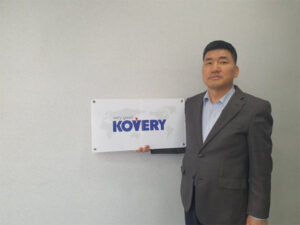
Background
Linear motors are widely used in major industrial fields including flat panel display (FPD), semiconductors, automation, medical diagnostics, 3D printing and machine tools. A linear motor is equivalent to a rotary synchronous motor with a ‘rolled-out’ stator and rotor. Instead of producing a torque for rotation, it produces a thrust force along its length.
KOVERY is an ultra-precision motor manufacturer based in Gyeonggi-do, South Korea. Dedicated to continuous R&D, KOVERY is a leading supplier of advanced high-precision linear motor systems.
KOVERY precision motors use patented technology to eliminate or minimise cogging forces that cause velocity ripple and increased bearing wear due to attraction between the stator and the mover parts of the linear motor.
Renishaw’s QUANTiC series of incremental encoders are employed in KOVERY linear motors for commutation and position control. KOVERY also uses other Renishaw metrology products including the EVOLUTE absolute optical encoder and the XL-80 laser system for machine calibration. The encoders are critical components that give reliable position feedback in challenging environments.
Challenge
Most linear motors are ‘flat linear motors’ that feature a permanent magnet track under a series of electromagnetic coils (forcer). Precise control of the forcer is required to enable demanding motion control applications in fields such as semiconductor and FPD manufacture.
Constant velocity control is essential for many advanced industrial processes, but traditional motor designs give rise to cogging forces which generate ripples in the motor velocity. One option for designers is to use a slotless (ironless) flat motor that provides excellent control at the expense of higher thrust outputs. KOVERY has developed a unique range of motors that minimise cogging forces without sacrificing thrust.
KOVERY President, Kim Houng-joong, introduces the company’s patented technology, stating, “The linear motors on the market come in various forms. Each design has its benefits but there are always trade-offs. The unique linear motors developed by our company are the first to arrange the permanent magnets in the vertical plane, so that they pass between the pole pieces of the forcer coils.
“This ensures uniform magnetic flux and an independent magnetic circuit for each magnet track. Our design allows the motor strength to be increased, simply by increasing the number of tracks. The design effectively reduces the normal attractive force between the slotted iron cores and the magnet tracks without sacrificing thrust. In other words, the overall thrust of the motor is increased, and the maximum is at least twice that of a conventional linear motor. Other advantages include reduced weight, increased design freedom, simple assembly and a low cost of ownership,” concluded Houng-joong.
Position encoders enable commutation of linear motors to provide smooth motion and position control. Encoders with lower jitter and interpolation error are preferred as they allow more accurate position control and lower velocity ripple. Encoders for linear motors need two critical design features to work well — a readhead (sensor) cable with a small minimum bend radius and long cable-life to allow for crimping, kinking, and bending on the machine cable track; and a high maximum operating temperature to withstand the expected heat outputs from the motor coils when power is applied. If the readhead is installed close to the magnetic coils, the encoder must also be able to withstand strong magnetic fields.
Solution
KOVERY uses a range of Renishaw optical encoders for its linear motors, including the advanced QUANTiC optical encoder.
In semiconductor and FPD process equipment applications, KOVERY linear motors are equipped with QUANTiC series encoders featuring 0.2 µm resolution, RTLC40 incremental scale and analogue or digital signal output. Motors for other applications employ Renishaw’s EVOLUTE absolute optical encoder with RTLA50-S linear scale.
Mr. Houng-joong continues: “KOVERY’s linear motors offer a range of specifications, and there are more than a dozen different stroke lengths alone. Sometimes, it is necessary to provide customised products with strokes up to several metres. We also expect that market demand for longer-stroke linear motors will increase. The QUANTiC encoder’s RTLC40 steel tape scale is supplied on a convenient reel, which allows us to cut the exact length required for each motor, improving our operation flexibility. In addition, the short delivery lead times and excellent cost performance are all factors. Renishaw’s encoders have improved the competitiveness of our products.”
Advantages of QUANTiC encoders include compatibility with industry-standard digital or analogue outputs, wide installation and operating tolerances of ±0.3 mm (rideheight) and ±0.9° (yaw), high operating speeds of up to 24 m/s, low Sub-Divisional Error (SDE) down to ±80 nm, flexible single-shielded cables for EMI protection, and an integrated set-up LED to aid installation.
Enhanced diagnostic data can be accessed via the optional Advanced Diagnostic Tool ADTi‑100 and free ADT View software. The ADTi‑100 is ideal for difficult installations, in-field diagnostics and fault finding.
In particular, the set-up LED and exceptionally wide installation tolerances of the QUANTiC encoder enable a quick and intuitive installation process, lowering machine build costs and reducing machine downtime when servicing. Furthermore, the low SDE and high resolution of the QUANTiC encoder improves linear motor accuracy and enables smoother motion control due to reduced velocity ripple.
As Mr. Houng-joong explains: “When choosing an encoder system, in addition to the encoder specifications required for our customer’s application, we also consider the installation difficulty and reliability in our production environment. Orders from equipment manufacturers require very short lead times – from the receipt of an order, we often have only three to six months for design, manufacturing, testing, and delivery.”
“The quick and easy installation of parts is absolutely one of the key factors for punctual delivery. QUANTIC encoders have wide installation tolerances that enable faster installation. Also, by monitoring the colour of the set-up LED on the readhead, we can quickly determine if the signal strength is up to standard and whether the installation is successful. These features save time, reduce costs and give us great confidence.”
Renishaw’s EVOLUTE absolute encoder features many of the same benefits of the QUANTiC series, including wide installation tolerances and good dirt immunity. Enhanced diagnostic data is also available through the Advanced Diagnostic Tool ADTa-100 hardware and ADT View software.
KOVERY tests and calibrates its motors prior to leaving the factory using Renishaw’s XL-80 laser system for machine calibration and quality control. These systems are fast, extremely accurate with linear measurement accuracies of 0.5 ppm, lightweight and portable.
“Our customers are mostly precision equipment manufacturers, who have demanding quality requirements, so motors need to be strictly verified before they leave our factory. The linearity, straightness and squareness of each linear motor is measured using Renishaw’s XL-80 laser interferometer. Dynamic measurements are also performed, including analysis of the velocity ripple. For product testing, the XL-80 system is quick to set-up and easy to use – it’s undoubtedly a great choice,” says Mr. Houng-joong.
Results
Renishaw’s encoder products and laser calibration systems have enabled KOVERY to build cutting-edge linear motors for advanced process machinery in fields such as semiconductor manufacturing. The partnership between Renishaw and KOVERY continues to support the latest linear motor developments.
Mr. Houng-joong concludes: “We focus on the development of ultra-high-precision and high-speed linear motors. It is impossible to have a thorough understanding of every component. Renishaw has done a very good job in after-sales support; they often communicate closely with our development team, provide relevant training where required, and have solved many application problems for us.”
For further information on Renishaw encoders, visit www.renishaw.com/en/position-and-motion-control–6331
Powelectrics offers over 30 years of expertise and practical experience in instrumentation and digitalisation, delivering solutions globally. The company has been offering remote tank level monitoring solutions for fuel management and theft protection for over a decade.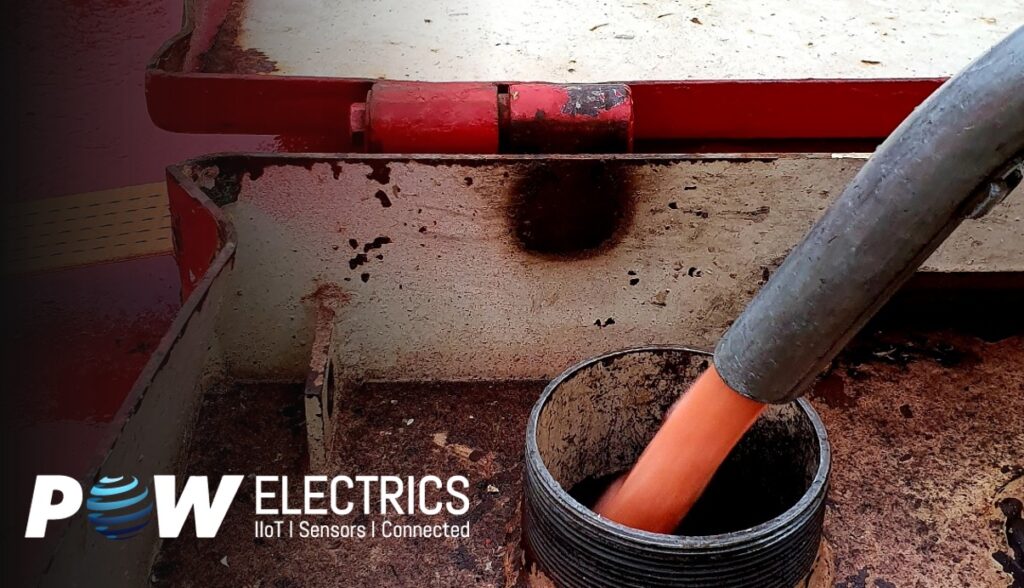
From 1 April 2022 it will no longer be legal to use red diesel for non-road mobile machinery such as bulldozers and cranes or to power mobile generators on construction sites.
Red diesel can only be used for vehicles and machinery used in agriculture, horticulture, fish farming and forestry.
That means that many businesses which previously benefitted from the tax breaks on red diesel, such as construction sites, will need to switch to more expensive ‘white’ or regular diesel.
White diesel can be used by anyone … used in cars … used for commercial heating …. uses that were excluded to red diesel. This means that fuel stolen from sites can be easily sold on to a wide range of users, without the same fear of detection associated with red diesel.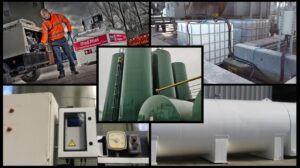
At the same time fuel prices are increasing rapidly and many sites are remote, making their white diesel tanks even more attractive targets for fuel theft.
Sites will already be paying more for ‘white’ diesel and can ill afford theft, with the associated clear-up costs, disruption and penalties for late delivery on projects.
Powelectrics’ robust, proven telemetry hardware can be battery-powered for use on remote sites.
The company’s telemetry platform can measure rate of change within defined time periods and issue alerts to multiple authorised recipients, available on any web-enabled device.
More on Powelectrics’ Fuel Management Solutions: Powelectrics Fuel Management & Vendor Managed Inventory
Fuel Theft Case Study: Royal Mail IIoT Case Study – Fuel Management & Theft Prevention (powelectrics.co.uk)
What can Powelectrics do for you?
Please browse the Powelectrics web site and get in touch with any fuel management queries you have or applications you would like to discuss. +44 1827 310 666 sales@powelectrics.co.uk or use this contact form.